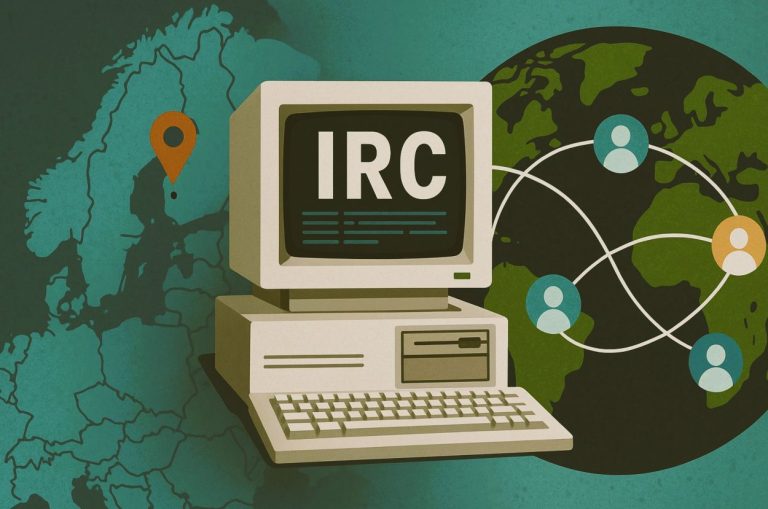

In today’s digital age, ensuring secure authentication is of paramount importance. Traditional password-based systems, while widely used, have significant limitations and vulnerabilities that can compromise sensitive data. As a result, there has been a rise in the adoption of digital fingerprint scanning as a more secure and reliable method of authentication. This article explores the concept of digital fingerprint scanning, its advantages, implementation, and its impact on various industries.
In a world where cyber threats are becoming increasingly sophisticated, protecting sensitive information is crucial. Passwords, the most common form of authentication, have inherent limitations. Users tend to choose weak passwords or reuse them across multiple platforms, leaving themselves vulnerable to hacking attempts. Moreover, passwords can be forgotten or easily stolen, putting personal and financial data at risk.
What is digital fingerprint scanning?
Digital fingerprint scanning, also known as biometric authentication, is a method of verifying an individual’s identity based on unique physical characteristics. It involves capturing and analyzing a person’s fingerprint patterns, which are then compared to previously stored templates for authentication purposes. This technology relies on the fact that fingerprints are highly distinctive and difficult to replicate, providing a robust layer of security.
Digital fingerprint scanning works by using specialized hardware and software to capture and process fingerprint data. When a user attempts to access a system or device, their fingerprint is scanned and compared against the stored templates. If the fingerprint matches, the user is granted access. Different types of digital fingerprint scanning exist, such as capacitive, optical, and ultrasonic scanning, each with its own strengths and applications.
Advantages of digital fingerprint scanning
Digital fingerprint scanning offers several advantages over traditional password-based authentication methods.
Enhanced Security
One of the primary benefits of digital fingerprint scanning is its enhanced security. Unlike passwords, which can be easily guessed or stolen, fingerprints are unique to each individual. This uniqueness makes it highly improbable for an unauthorized person to gain access using someone else’s fingerprint.
Additionally, the complexity and intricate nature of fingerprint patterns make them extremely difficult to forge or replicate, providing an additional layer of security.
Convenience and Ease of Use
Digital fingerprint scanning offers unparalleled convenience and ease of use. Users no longer need to remember complex passwords or worry about forgetting them. With a simple touch or swipe, the fingerprint scanner can authenticate the user within seconds. This seamless and frictionless experience enhances user satisfaction and streamlines authentication processes.
Lower Risk of Password-Related Issues
Password-related issues, such as forgotten passwords or password fatigue from managing multiple accounts, are common frustrations for users. Digital fingerprint scanning eliminates these problems entirely. Users no longer need to rely on memory or maintain a list of passwords, reducing the risk of forgetting or misplacing them. This eliminates the need for password resets and reduces the burden on help desks and support teams.
Applications in Different Industries
Digital fingerprint scanning has widespread applications across various industries. In the banking and finance sector, it can be used for secure access to online banking platforms and conducting financial transactions. In healthcare, it can be utilized for patient identification, ensuring accurate records, and preventing medical identity theft. Other industries, such as government, transportation, and retail, can also benefit from the increased security and convenience provided by digital fingerprint scanning.
Implementation of Digital Fingerprint Scanning
The implementation of digital fingerprint scanning involves several key components.
Biometric Sensors and Technology
Digital fingerprint scanning relies on biometric sensors to capture the unique patterns on an individual’s fingertips. These sensors can be found in various devices, including smartphones, laptops, and access control systems. The sensors use different technologies, such as capacitive or optical, to capture and convert fingerprint data into digital signals for analysis and comparison.
Integration with Devices and Systems
To leverage the benefits of digital fingerprint scanning, devices, and systems need to be equipped with the necessary hardware and software. Many smartphones now feature built-in fingerprint sensors, allowing users to unlock their devices or authenticate payments using their fingerprints. Access control systems in offices and high-security areas also incorporate fingerprint scanners for secure entry.
Privacy Concerns and Data Protection
As with any biometric technology, privacy concerns and data protection are crucial considerations. Organizations implementing digital fingerprint scanning must ensure that user data is stored securely and protected from unauthorized access. It is essential to comply with relevant data protection regulations and provide transparent information to users about how their biometric data will be used and safeguarded.
Digital Fingerprint Scanning in Everyday Life
Digital fingerprint scanning has become increasingly prevalent in everyday life, revolutionizing various aspects of security and authentication.
Smartphones and Mobile Devices
Smartphones and mobile devices have been at the forefront of the adoption of digital fingerprint scanning. Users can unlock their devices, authorize app installations, and authenticate payments using their fingerprints. This provides a convenient and secure method of protecting personal information and sensitive data stored on these devices.
Access Control and Physical Security
Digital fingerprint scanning is widely used in access control systems to enhance physical security. Instead of traditional keycards or PIN codes, individuals can gain access to secure areas by simply scanning their fingerprints. This eliminates the need for physical tokens and reduces the risk of unauthorized entry.
Financial Transactions and e-Commerce
In the realm of financial transactions and e-commerce, digital fingerprint scanning offers an additional layer of security. It ensures that only authorized individuals can access their online banking accounts, make financial transactions, or authorized purchases. This helps prevent fraudulent activities and safeguards sensitive financial information.
Healthcare and Medical Applications
Digital fingerprint scanning plays a significant role in healthcare and medical applications. It enables accurate patient identification, reducing the risk of medical errors and ensuring proper record keeping. Moreover, it helps prevent medical identity theft, where individuals impersonate others to access healthcare services or prescription medications.
Future Developments and Potential Challenges
As technology continues to advance, digital fingerprint scanning is expected to evolve and face both opportunities and challenges.
Advancements in Biometric Technology
The future holds promising advancements in biometric technology, including improvements in the accuracy, speed, and reliability of digital fingerprint scanning. This may include the integration of artificial intelligence and machine learning algorithms to enhance the matching and authentication process further. Additionally, new sensor technologies may allow for more compact and versatile fingerprint scanners, expanding their application possibilities.
Potential Issues and Vulnerabilities
While digital fingerprint scanning offers robust security, it is not immune to potential issues and vulnerabilities. Hackers and cybercriminals may attempt to exploit weaknesses in the system or bypass the authentication process. It is crucial to continuously update and strengthen the security measures surrounding digital fingerprint scanning to stay ahead of emerging threats.
Balancing Security and Privacy Concerns
Balancing security with privacy concerns is an ongoing challenge in the implementation of digital fingerprint scanning. Organizations must strike a balance between protecting sensitive data and respecting user privacy rights. Clear communication, transparent data handling practices, and adherence to privacy regulations are vital to maintaining user trust and confidence.
In conclusion, Fingerscan Digital represents a significant leap forward in secure authentication. By leveraging the unique and unforgeable nature of fingerprints, this cutting-edge technology provides enhanced security, convenience, and ease of use. Fingerscan Digital’s applications span various industries, improving access control, protecting personal information, and preventing fraudulent activities.
With Fingerscan Digital, organizations can ensure robust security measures by utilizing the complexity and intricate nature of fingerprints. This advanced biometric authentication method offers unparalleled accuracy and reliability, making it extremely difficult for unauthorized individuals to gain access. By eliminating the vulnerabilities associated with traditional password-based systems, Fingerscan Digital provides a more secure and reliable solution for authentication.
Furthermore, the implementation of Fingerscan Digital is seamless and user-friendly. With a simple touch or swipe, individuals can authenticate their identity within seconds, eliminating the need for remembering complex passwords or dealing with password-related issues. This convenience and ease of use enhance user satisfaction and streamline authentication processes.
Fingerscan Digital finds applications in various industries, including banking and finance, healthcare, government, transportation, and retail. It revolutionizes everyday life by providing secure access to smartphones, enhancing physical security through access control systems, securing financial transactions, and enabling accurate patient identification in healthcare settings.
As technology continues to advance, Fingerscan Digital is poised to evolve further. Future developments may include advancements in biometric technology, such as improved accuracy, speed, and reliability.
Additionally, efforts will be made to address potential challenges, such as maintaining a balance between security and privacy concerns. In summary, Fingerscan Digital offers a robust and reliable solution for secure authentication. Its adoption can significantly enhance the security landscape, protect sensitive information, and provide a seamless user experience. With Fingerscan Digital, organizations can embrace the rise of digital fingerprint scanning and ensure a more secure future in authentication methods.


